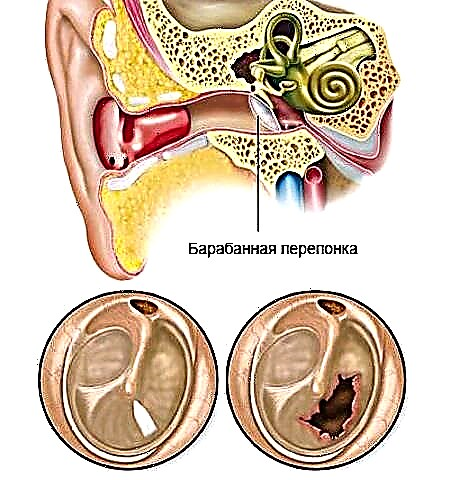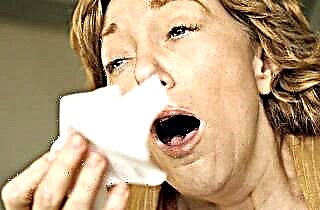Unfortunately, runny nose in children is a common occurrence. It can be provoked by various factors, which determines the treatment tactics and symptoms of the disease. It is necessary to treat rhinitis when the first signs of the disease appear, otherwise complications will not be long in coming. Komarovsky knows how to treat a lingering rhinitis in a child. His advice has helped many children recover without serious consequences.
 To get rid of the symptoms of the disease and improve the condition of the child, you need to eliminate the cause of the disease and start drug therapy.
To get rid of the symptoms of the disease and improve the condition of the child, you need to eliminate the cause of the disease and start drug therapy.
A runny nose can disturb from the first year of life, which requires a special therapeutic approach.
Against the background of physiological immunodeficiency in infants, complications are observed much more often than in older children.
Common causes and symptom complex of the disease
Why does a runny nose appear and how to detect it at the beginning of the disease? Rhinitis can develop due to:
- colds provoked by hypothermia, inhalation of frosty air or exposure to a draft. Note that against the background of spasm of the blood vessels of the nasopharynx, the risk of viral infection of the body increases, since the protection of the mucous membrane decreases. This group of reasons also includes a sharp temperature drop;
- an allergic reaction when the nasal mucosa comes into contact with dust, pollen, wool. In this case, it is possible to get rid of the symptoms of the disease only after the cessation of the influence of the provoking factor on the body;
- inhalation of dry, dusty air, which irritates the nasal mucosa, provoking increased mucus production (as a protective reaction);
- immunodeficiency due to concomitant pathology. Premature babies with severe infectious and somatic diseases are especially often sick;
- increased psychoemotional excitability, due to which the regulation of vascular tone is disrupted, and vasomotor rhinitis develops. In addition, hormonal fluctuations can cause it;
- teething;
- infection (viral, bacterial). Rhinitis can develop as a result of a primary infection of the body or as a result of the activation of opportunistic microbes.
A prolonged runny nose is accompanied by:
- nasal congestion, which is often observed on one side;
- subfebrile condition;
- mucous discharge from the nose of a watery or thick consistency;
- Difficulty in nasal breathing, which is why the child's mouth is constantly open;
- swelling of the nasal mucosa;
- nasal voice;
- violation of smell, taste;
- snoring;
- headaches;
- dysphagia. Intestinal dysfunction in the form of diarrhea, as well as vomiting, can occur due to the large intake of air in the stomach. This happens in the absence of nasal breathing, when the child swallows air with food;
- a change in the psycho-emotional state (tearfulness, irritability);
- decrease in body weight (due to decreased appetite and difficulties in feeding infants against a background of nasal congestion).
Clinical symptoms of the disease can manifest themselves in varying degrees of severity, characterizing the exacerbation or period of remission of the disease.
Persistent disturbance of nasal breathing for several months can lead to hypoxia and delayed development of the child.
Expert opinion
 To cure a lingering runny nose in a child, Komarovsky recommends that the first thing to do is to establish the cause of the disease. Without eliminating the effect of the allergen on the body, it will not be possible to completely get rid of the symptoms of the disease. With the help of drugs, you can only reduce their severity. A prolonged course of an allergic rhinitis is fraught with the appearance of asthma attacks and the development of bronchial asthma, as complications of allergies.
To cure a lingering runny nose in a child, Komarovsky recommends that the first thing to do is to establish the cause of the disease. Without eliminating the effect of the allergen on the body, it will not be possible to completely get rid of the symptoms of the disease. With the help of drugs, you can only reduce their severity. A prolonged course of an allergic rhinitis is fraught with the appearance of asthma attacks and the development of bronchial asthma, as complications of allergies.
In addition, in the presence of infectious pathogens in the nasopharyngeal mucosa, the inflammatory process will be supported by toxins produced by microbes. Thus, chronic rhinitis of an infectious origin will persist until the complete reorganization of the bacterial focus.
Repeatedly Komarovsky drew the attention of parents to the fact that the production of mucus in the nasal cavities is a physiological protective reaction. Thanks to mucus and the constant movement of the cilia of the epithelium, the nasal passages are cleared of dust, toxins, and microbes. It also provides moisture to the mucous membrane, preventing it from drying out, and protection from the negative effects of environmental factors.
The increased secretion of mucus helps prevent infection of the body by flushing microbes from the nasal cavities. This information is relevant for those parents who, from the first days of illness, begin to use vasoconstrictor nasal drops.
Komarovsky notes that the use of vasoconstrictors is rational only with an allergic origin of the common cold, which makes it possible to reduce the swelling of the mucous membrane and rhinorrhea.
In children, with improper treatment or no treatment at all, the risk of complications increases. They are presented:
- sinusitis, when inflammation spreads to the mucous membrane of the paranasal cavities;
- otitis media, as a result of the spread of infection to the mucous membrane of the Eustachian tube and ear cavity;
- pharyngitis (rhinopharyngitis), which is often observed with a cold;
- inflammation of the lacrimal apparatus;
- meningitis;
- sepsis.
Useful Tips

How does Komarovsky propose to treat a lingering rhinitis in a child? The main task of parents is to provide optimal conditions for the child and control over his breathing. Some babies cannot adapt to the lack of nasal breathing, which can lead to periods of apnea during sleep. That is why a runny nose needs to be treated in a timely and effective manner.
Throughout the entire period of treatment for chronic rhinitis, it is necessary to moisturize the nasal mucosa. For this, it is advisable to use saline. It is completely harmless and allowed for use from the first days of life. You can also prepare a solution yourself by dissolving food salt (2 g) in warm water with a volume of 320 ml. Note that the salt crystals must be completely dissolved, otherwise they can damage the delicate nasal mucosa.
To make breathing easier, you need to ensure the patency of the nasal passages. For this purpose, special aspirators have been developed, but in their absence, a small syringe can be used.
The aspirator is indicated for use with a cold in infants, because at an older age, children can blow their nose on their own.
Note that frequent use of an aspirator is fraught with dryness of the mucous membrane, which also slows down recovery. In some cases, the cause of the disease can be the anatomical features of the nasopharynx or traumatic damage to the nose. In this case, it is necessary to consult a pediatric otolaryngologist who performs operations to eliminate the deformed septum and other anomalies.
To cure a runny nose, you need to follow these guidelines:
- control of air humidity in the nursery (optimal level 75%). Due to the humidification of the air, the nasal mucosa does not dry out, thereby maintaining an optimal level of protection. For humidification, you can use special devices (humidifiers) or hang wet diapers in the room;
- regular cleaning, airing the children's room. By reducing the concentration of dust and allergens in the air, the nasal mucosa is less exposed to their irritating effect;
- temperature regime. The optimum temperature in the room is 20 degrees;
- walks in the open air.Many parents neglect walking, citing a high risk of worsening the disease. This can happen if you dress your child easily or spend the whole day outside. To saturate the internal organs of oxygen and facilitate nasal breathing, a two-hour walk is enough, repeating it a couple of times a day. In this case, the weather should be warm, and the child should be dressed “according to the weather”;
 nutrition. Particular attention should be paid to a nutritious diet. If the disease concerns a baby, the problem is the inability to suckle a breast or a bottle. When trying to feed, the baby begins to choke and cry. Avoiding food can lead to weight loss. In this case, a spoon or syringe (without a needle) can be used for feeding. When a runny nose is observed in older children, it is recommended to enrich the nutritious diet with fresh fruits high in vitamin C;
nutrition. Particular attention should be paid to a nutritious diet. If the disease concerns a baby, the problem is the inability to suckle a breast or a bottle. When trying to feed, the baby begins to choke and cry. Avoiding food can lead to weight loss. In this case, a spoon or syringe (without a needle) can be used for feeding. When a runny nose is observed in older children, it is recommended to enrich the nutritious diet with fresh fruits high in vitamin C;- drinking regimen. Increased drinking is considered an important part of therapy. With fever, increased sweating, and shortness of breath, the body loses a large amount of fluid, which is unacceptable for children. In infants, against the background of diarrhea and vomiting, dehydration occurs very quickly, which is fraught with the appearance of seizures. To replenish fluid losses and normalize the water-electrolyte balance, it is recommended to give the child still mineral water, unsweetened salts, compotes or herbal teas. This does not apply to babies who have not yet received complementary foods;
- vitamin therapy (vitamin C in combination with trace elements).
The calculation of the daily drinking volume should be carried out exclusively by a doctor, taking into account the age of the child, the severity and symptoms of the disease.
Prohibitions in treatment
The treatment of a cold in a child must be approached carefully, because not all drugs are allowed in childhood. That is why a medical consultation should be carried out before starting treatment. Komarovsky does not recommend:
- use nasal drops with antibacterial action;
- use vasoconstrictors at the beginning of a viral rhinitis, because the increased production of mucus is a protective reaction of the body;
- bury your nose with aloe or vegetable juice.
Adhering to the advice of Dr. Komarovsky, you can not only cure a lingering rhinitis in children, but also strengthen the immune system. To prevent the chronicization of inflammation in the nasal cavities and other ENT organs, it is necessary to timely treat the acute stage of the disease.

 nutrition. Particular attention should be paid to a nutritious diet. If the disease concerns a baby, the problem is the inability to suckle a breast or a bottle. When trying to feed, the baby begins to choke and cry. Avoiding food can lead to weight loss. In this case, a spoon or syringe (without a needle) can be used for feeding. When a runny nose is observed in older children, it is recommended to enrich the nutritious diet with fresh fruits high in vitamin C;
nutrition. Particular attention should be paid to a nutritious diet. If the disease concerns a baby, the problem is the inability to suckle a breast or a bottle. When trying to feed, the baby begins to choke and cry. Avoiding food can lead to weight loss. In this case, a spoon or syringe (without a needle) can be used for feeding. When a runny nose is observed in older children, it is recommended to enrich the nutritious diet with fresh fruits high in vitamin C;

